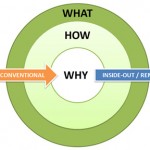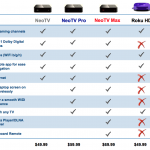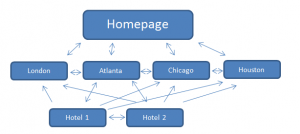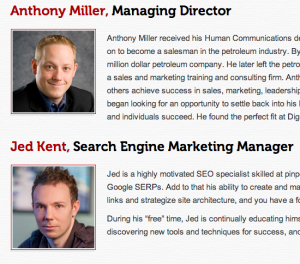Most blog posts about copywriting make me sick. They tell you that your goal is to persuade people to do something and that you can use as much manipulation as you want to make it happen. But if you’re talking to a sophisticated audience, cheap infomercial tricks aren’t going to work. Your audience knows better. They can smell BS from a mile away.
When it comes to persuading someone to do something, trust is the only tool that will do the job. If your audience doesn’t trust you, you have zero chance of getting their business. These are some tips to help you earn the trust of your audience.
 Talk About the Why
Talk About the Why
Start With Why is one of the best books I’ve ever read. It says that every company in the world knows their “what” (what they sell, such as “photography equipment”). Some companies know their “how” (how they sell it, such as “we sell premium photography equipment online to professional photographers”). But very few companies know their “why” (why they do what they do, such as “we believe in using photography to express emotions”).
If you watch Apple ads, you’ll notice that they don’t talk about features (how much RAM their computers have, or how many GB the iPod has). They show you hip, young, creative people using their computers, and when Steve Jobs introduced the iPod he talked about “10,000 songs in your pocket.” It’s not about your product, it’s about what your product represents.
Sharing your “why” allows you to emotionally connect with your audience. We could say we’re a marketing agency, or we could say that we believe that every marketing campaign should focus on return-on-investment, because if a marketing campaign isn’t producing revenue, it should be killed.
Tell your audience what you stand for, what you believe in and why you do what you do. Take a position, don’t try to make everyone happy. Generic copy that doesn’t appeal to emotion just doesn’t work.
 Be Authentic
Be Authentic
Stop filling up your website with positive testimonials and not posting the negative ones. Your customers know what you’re doing. Every company has customer complaints. Taking all your feedback, hiding the bad comments and only showing the good ones is the easiest way to lose your visitors’ trust. Instead, post all the comments, make things right when you screw up, and post your responses next to negative comments so your visitors can see that when something goes south, you always fix it.
Stop pretending to be what you are not. Stop trying to look bigger than you are. Turn negatives into positives. If you’re a small company, talk about why that’s a benefit (you’re nimbler, have no politics, offer a better value, you pick up the phone when people call, etc.)
 Write the Way You Talk
Write the Way You Talk
Compare these two descriptions of the popular software Skype.
“Skype is a peer-to-peer networking software that allows for real-time voice over IP.”
“With Skype you can call anyone you want (anywhere in the world) for free.”
I think you’ll agree with me that the second example is much more effective. Lose all the corporate talk and tech lingo. I know a piece of copy is successful when a 10-year-old can understand it. Simplicity is elegant. Impress people with the content of your copy, not with big words.
 Provide All the Content Your Customers Need to Make a Decision
Provide All the Content Your Customers Need to Make a Decision
Forget about persuading. Start thinking about informing. Sophisticated buyers need the right information at the right time in a way that is easy to digest. Use infographics, video demos and comparison charts. Provide buying guides, pricing information, calculators and any other tools your customers need.
Not making information available on your website to force people to contact you doesn’t work anymore. If you don’t provide them with the information they want, your competitors are only one click away.
 Connect Your Content
Connect Your Content
Help people find the information they want on your website. A navigation menu isn’t enough. I’m a big fan of contextual links. These are text links in a paragraph that link to other pages on your site. For example, if you’re talking about how your widgets come in blue, red and green, turn these words into links that point to pictures or videos of the products in different colors.
When we started doing this on our website, our engagement metrics (average number of pages per visit and time spent on site) nearly doubled, as people read more of our content.
Keep in mind that about half of your traffic isn’t entering your website through the home page, so linking to your key pages from several other pages on your site can help these people find what they’re looking for.
 Remember that People Buy from People
Remember that People Buy from People
You might think “We sell high-end computer servers, why in the world would people want to know what my hobbies are?” It’s because people buy from people, not companies. And the more your customers know about you, the more they can relate to you and trust you. For example, if you love golf and find out that someone you’re talking to plays golf, too, now you have something in common. You’re “closer” to the other person. This doesn’t mean that your product is right for them, but when someone trusts you and can relate to you, you have a better chance of getting their attention. And attention is the ultimate currency online.
Put together a nice “About Us” page. Let people know who you are, why you love what you do, what you believe in, what makes you good at your job and what you do when you’re not working. And don’t forget to include a nice picture of yourself. There are over a dozen studies that prove that we trust people more when we know what they look like.
 Don’t Forget Your Call to Action
Don’t Forget Your Call to Action
Talking about what you do, how you do it and why you do it is great, but not enough. You need to invite people to take action. You should have a call to action on every page of your website.
A great call to action has two characteristics: it’s obvious and it involves little risk. By obvious I mean that it has to be the most prominent element on the page. When we design web pages we place the call to action on the page first, and then design the rest of the page around it.
And as far as decreasing the amount of risk you ask your visitors to take, keep this in mind: you’ve earned a little trust from your visitors, so don’t ask for too much too soon. Ask for something that doesn’t involve too much risk, such as downloading a white paper or subscribing to your weekly email deals. You should also make it easy for people to request a quote or buy something from you if they’re ready, but the low-risk calls to action are there for most of your visitors that are starting to get warmed up to you, but aren’t ready to become customers yet.

